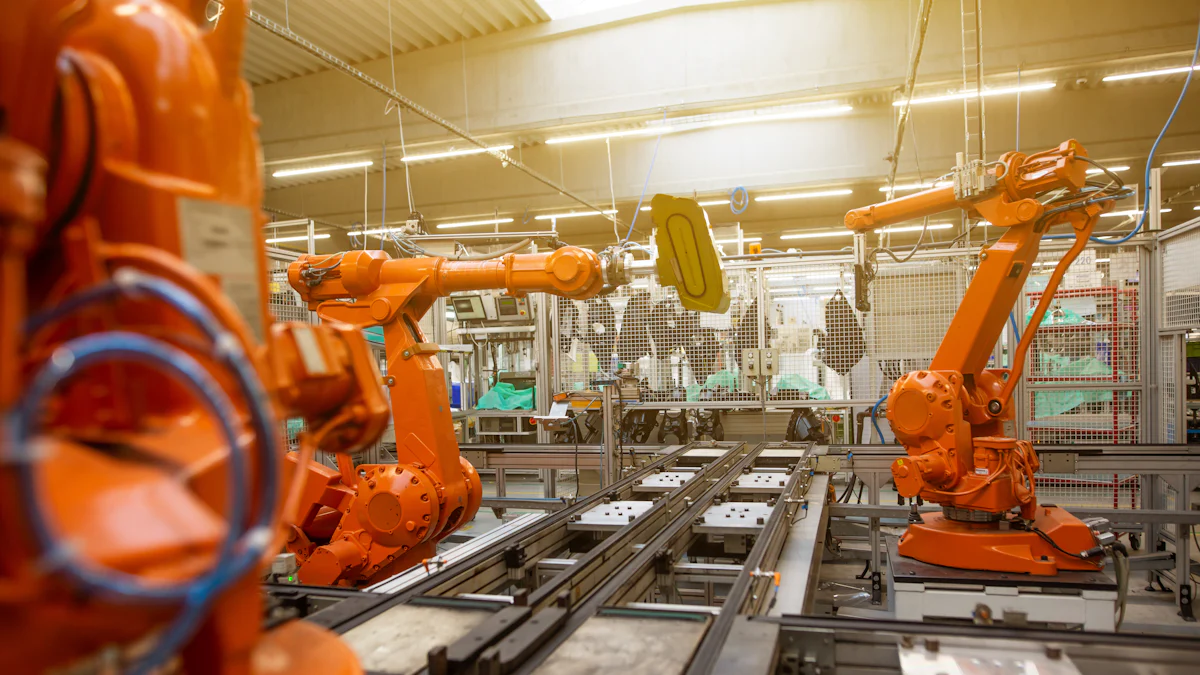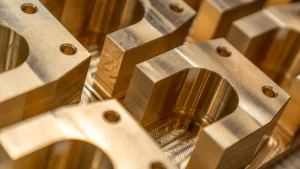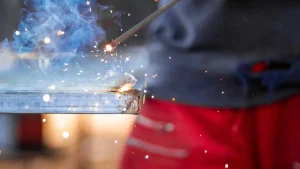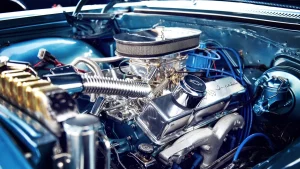
End effectors, the tools at the end of robotic arms, are the unsung heroes of automation. They allow robots to grip, weld, assemble, and even sense their surroundings. Without them, robots would lack the ability to interact with the world. As industries like manufacturing and healthcare embrace automation, the demand for advanced end effectors grows rapidly. Their design determines how effectively a robot performs tasks, making them critical to robotic systems. You might wonder—how have these devices evolved to meet the increasing complexity of modern robotics?
Key Takeaways
- End effectors are crucial for enabling robots to interact with their environment, performing tasks like gripping, welding, and sensing.
- The evolution from simple mechanical tools to advanced designs has expanded the applications of end effectors across industries such as manufacturing, healthcare, and agriculture.
- Material innovations, particularly in soft robotics, allow for greater flexibility and sensitivity, enabling robots to handle delicate tasks without damage.
- Integration of AI and sensor technologies enhances the adaptability of end effectors, allowing robots to learn and respond to their surroundings in real time.
- Modern end effectors come in various forms, including grippers, suction cups, and specialized tools, each tailored for specific industrial applications.
- Future trends indicate a shift towards adaptive and bio-inspired end effectors, which promise to improve efficiency and precision in dynamic environments.
- Collaborative robots (cobots) equipped with advanced end effectors are transforming workplaces by enhancing human-robot interaction and productivity.
The Origins of End Effectors in Robotics
Early Designs and Applications
In the early days of robotics, end effectors were simple mechanical tools designed to perform repetitive tasks. These devices often mimicked human hands but lacked the finesse and adaptability you see in modern designs. Factories used them primarily for tasks like gripping objects, welding, or assembling parts. Their straightforward design made them reliable for structured environments, such as assembly lines, where precision and consistency were paramount.
One of the earliest applications of end effectors appeared in manufacturing. Robots equipped with these tools revolutionized industries by automating labor-intensive processes. For example, robotic arms with basic grippers could handle heavy materials, reducing the physical strain on workers. This innovation not only improved efficiency but also set the stage for more advanced robotic systems.
However, these early designs had limitations. They struggled to adapt to unstructured environments, such as agricultural fields or healthcare settings. For instance, harvesting delicate fruits required a level of care that early end effectors could not provide. Despite their simplicity, these tools laid the foundation for the diverse functionalities you now associate with robotic end effectors.
Challenges and Limitations of Early End Effectors
While early end effectors brought significant advancements, they faced numerous challenges. Their rigid designs limited their ability to handle delicate or irregularly shaped objects. You can imagine how difficult it would be for a robotic arm with a basic gripper to pick up a fragile glass without breaking it. This lack of versatility restricted their use to specific industries and tasks.
Another major limitation was their inability to operate in dynamic or unpredictable environments. For example, in agriculture, robots needed to navigate uneven terrain and interact with soft, perishable products like fruits. Early end effectors lacked the sensitivity and adaptability required for such tasks. This gap highlighted the need for more sophisticated designs capable of mimicking human dexterity.
Moreover, these tools often required extensive programming to perform even basic tasks. Without advanced sensors or artificial intelligence, they could not adjust to changes in their surroundings. This rigidity made them less efficient in scenarios where flexibility and quick decision-making were essential.
Despite these challenges, the early development of end effectors marked a crucial step in robotics. It demonstrated the potential of machines to perform tasks traditionally done by humans. These initial efforts paved the way for innovations that would address these limitations and expand the scope of robotic applications.
Technological Advancements in End Effector Design

The evolution of technology has transformed the way end effectors function, making them more versatile and capable of handling complex tasks. These advancements have not only expanded their applications but also redefined what robots can achieve in industries like healthcare, agriculture, and manufacturing.
Material Innovations and Soft Robotics
Material science has played a pivotal role in advancing end effector design. Traditional end effectors relied on rigid materials, which limited their ability to handle delicate or irregularly shaped objects. Today, engineers use advanced materials like elastomers and shape-memory alloys to create soft robotic end effectors. These materials allow robots to mimic the flexibility and sensitivity of human hands.
Soft robotics has revolutionized industries that require precision and care. For example, in agriculture, soft grippers can now harvest fragile fruits without causing damage. Similarly, in healthcare, robotic arms equipped with soft end effectors assist in surgeries by handling tissues with unmatched delicacy. These innovations have opened doors to applications that were once impossible for traditional robotic systems.
According to a study on robotic harvesting operations, the implementation of soft end effectors has significantly improved the efficiency and accuracy of tasks like fruit picking and sorting. This demonstrates how material innovations continue to push the boundaries of robotic capabilities.
Enhanced Precision and Dexterity
Precision and dexterity are critical for robots to perform intricate tasks. Early end effectors lacked the finesse required for such operations. However, modern designs incorporate advanced mechanisms that enhance their control and movement. Multi-fingered grippers, inspired by the human hand, now allow robots to manipulate objects with exceptional accuracy.
Industries like electronics manufacturing benefit greatly from these advancements. Robots equipped with precise end effectors can assemble tiny components, ensuring consistency and reducing errors. In the medical field, robotic arms with enhanced dexterity perform minimally invasive surgeries, offering patients faster recovery times and reduced risks.
You can see how these improvements make robots indispensable in environments where accuracy is non-negotiable. By enabling robots to handle tasks that demand fine motor skills, enhanced end effectors have become a cornerstone of modern automation.
Integration of AI and Sensor Technologies
Artificial intelligence (AI) and sensor technologies have taken end effectors to a new level of sophistication. Sensors embedded in end effectors provide real-time feedback, allowing robots to adapt to their surroundings. For instance, force sensors help robots adjust their grip strength, ensuring they don’t crush fragile items.
AI further amplifies these capabilities by enabling robots to learn and improve over time. Machine learning algorithms analyze data from sensors, helping robots predict and respond to changes in their environment. This combination of AI and sensors has made end effectors smarter and more autonomous.
A report on the global robot end effector market highlights the growing demand for AI-integrated solutions. Industries like automotive and healthcare increasingly rely on these technologies to automate complex processes and improve efficiency.
Imagine a robot in a warehouse sorting packages of varying sizes and weights. With AI and sensors, the robot can identify each package, determine the appropriate grip, and place it in the correct location—all without human intervention. This level of adaptability showcases the transformative potential of smart end effectors.
The Current State of End Effectors
The world of robotics has reached a point where end effectors are no longer just tools—they are the backbone of automation. These devices have become smarter, more versatile, and capable of performing tasks that were once unimaginable. Let’s explore the types of modern end effectors, their applications across industries, and the challenges that come with designing them.
Types of Modern End Effectors
Modern end effectors come in a variety of forms, each tailored to specific tasks. The most common types include:
- Grippers: These are widely used for picking and placing objects. They range from simple two-finger designs to advanced multi-fingered models that mimic human hands.
- Suction Cups: Ideal for handling flat or smooth surfaces, suction cups are commonly used in packaging and logistics industries.
- Magnetic End Effectors: These are perfect for handling metallic objects, especially in high-speed assembly lines. They reduce tooling complexity and improve precision.
- Processing Tools: These include welding torches, cutting tools, and painting nozzles, which are essential in manufacturing processes.
- Specialized End Effectors: Designed for unique tasks, such as surgical instruments in healthcare or harvesting tools in agriculture.
Each type of end effector plays a critical role in enhancing the efficiency and accuracy of robotic systems. For example, magnetic end effectors streamline operations in white goods manufacturing by reducing errors and speeding up assembly processes.
Applications Across Various Industries
End effectors have revolutionized industries by enabling robots to perform tasks with unmatched precision and speed. Here are some key applications:
- Automotive Industry: Robots equipped with end effectors handle welding, assembly, and material handling tasks. This has been a game-changer for automakers, allowing them to produce vehicles faster and with greater consistency.
- Healthcare: In surgeries, robotic arms with specialized end effectors assist doctors by providing steady, precise movements. This reduces risks and improves patient outcomes.
- Agriculture: Soft robotic grippers harvest delicate fruits without causing damage, addressing the challenges of labor shortages and increasing productivity.
- Electronics Manufacturing: Robots with multi-fingered grippers assemble tiny components, ensuring high accuracy and reducing defects.
- Logistics and Warehousing: Suction cups and grippers sort and move packages efficiently, speeding up supply chain operations.
These applications highlight how end effectors adapt to diverse environments, making them indispensable in modern industries.
Design Challenges in Modern End Effectors
Despite their advancements, designing modern end effectors comes with its own set of challenges. One major issue is balancing versatility with specialization. While some industries require highly specialized tools, others demand adaptable designs that can handle multiple tasks.
Another challenge lies in integrating advanced technologies like sensors and AI. While these features enhance functionality, they also increase complexity and cost. For instance, embedding force sensors in grippers improves precision but requires meticulous calibration and maintenance.
Durability is another concern. End effectors must withstand harsh conditions, such as extreme temperatures or corrosive environments, without compromising performance. Engineers often face the difficult task of selecting materials that are both lightweight and robust.
Finally, ensuring compatibility with different robotic systems adds another layer of complexity. Manufacturers must design end effectors that can seamlessly integrate with various robots, which often have unique specifications.
As the demand for automation grows, overcoming these challenges will be crucial for the continued evolution of end effectors. By addressing these issues, engineers can unlock new possibilities for robotics across industries.
Future Trends in End Effectors

The future of robotics lies in the continuous evolution of end effectors. These tools are becoming smarter, more adaptive, and increasingly capable of working alongside humans. As industries demand greater efficiency and precision, the next generation of end effectors promises to redefine what robots can achieve.
Adaptive and Intelligent End Effectors
Imagine a robotic arm that adjusts its grip strength based on the object it holds. Adaptive end effectors are making this a reality. These tools use integrated sensors and artificial intelligence to analyze their environment and respond in real time. For example, force sensors allow robots to handle fragile items like glassware without breaking them. AI algorithms enable these end effectors to learn from past interactions, improving their performance over time.
A study on Future Trends in End Effector Development highlights the growing importance of adaptability. It notes that smart technologies and touch sensitivity are shaping the next wave of robotic tools.
Adaptive end effectors excel in dynamic environments. In warehouses, they can sort packages of varying sizes and weights with minimal human intervention. In healthcare, they assist in surgeries by adjusting their movements to the delicate nature of human tissues. These advancements not only enhance efficiency but also open doors to applications previously thought impossible.
Bio-Inspired and Soft Robotics
Nature has always been a source of inspiration for innovation. Bio-inspired end effectors mimic the flexibility and functionality of biological limbs. Engineers are designing tools that replicate the dexterity of a human hand or the suction capabilities of an octopus tentacle. These designs offer unparalleled versatility and precision.
Soft robotics plays a crucial role in this trend. Unlike traditional rigid tools, soft end effectors use materials like elastomers to adapt to irregular shapes. This makes them ideal for handling delicate objects, such as fruits in agriculture or organs in medical procedures.
According to research, soft robotic grippers have significantly improved efficiency in tasks like fruit harvesting. Their ability to handle fragile items without damage showcases the potential of bio-inspired designs.
By combining bio-inspired principles with advanced materials, these end effectors are pushing the boundaries of what robots can do. They are not just tools; they are extensions of the robotic system, capable of performing tasks with human-like precision.
Collaborative Robotics and Human-Robot Interaction
The rise of collaborative robots, or cobots, is transforming workplaces. These robots work alongside humans, enhancing productivity and safety. End effectors play a pivotal role in this collaboration. They are designed to be safe, intuitive, and responsive, ensuring seamless interaction between humans and machines.
For instance, tactile sensors in end effectors detect human touch, allowing robots to pause or adjust their actions. This feature is crucial in environments like manufacturing, where workers and robots share the same space. Specialized grippers also enable cobots to perform tasks that require a high degree of precision, such as assembling intricate components.
The integration of adaptive grippers and AI-driven end effectors is positively influencing market dynamics. These innovations are making collaborative robotics more accessible across industries.
Human-robot interaction is not just about safety; it’s about synergy. End effectors equipped with advanced technologies empower robots to complement human skills. Whether it’s lifting heavy objects or performing repetitive tasks, these tools enhance the capabilities of both robots and their human counterparts.
The journey of end effectors showcases how robotics has evolved from simple mechanical tools to advanced, intelligent systems. These devices have transformed robots into versatile machines capable of performing intricate and diverse tasks across industries. As technology progresses, end effectors will redefine automation, enabling robots to tackle challenges with greater precision and adaptability. Their role as the interface between robots and their environments remains indispensable. By embracing future innovations, you can expect end effectors to unlock new possibilities, driving efficiency and productivity while reshaping industries worldwide.





